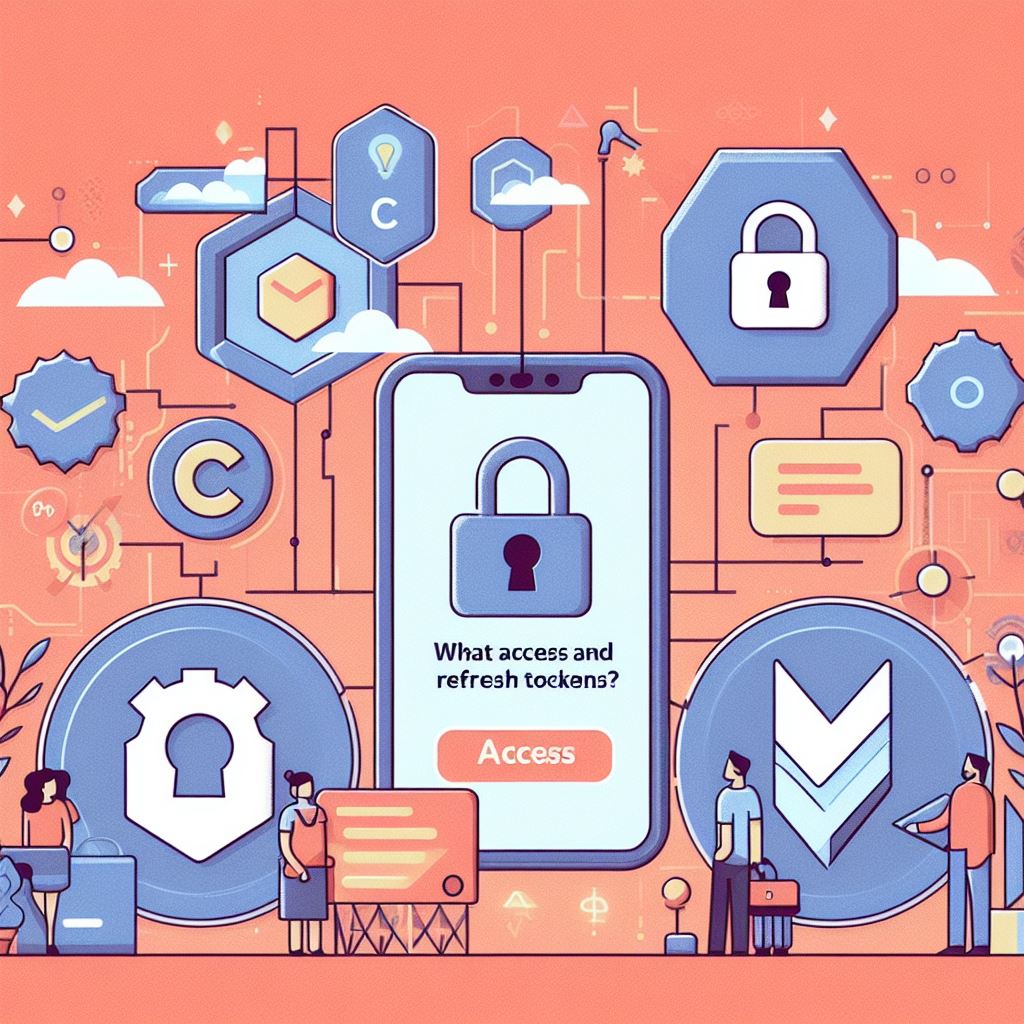Access and refresh tokens are integral components of authentication and authorization processes in modern web and mobile applications. Let’s break down the concepts and differences between them in a beginner-friendly guide
What are Tokens?
Tokens are pieces of information that applications use to prove the identity of a user (authentication) and grant access to specific resources (authorization).
Access Tokens
An Access Token is like a digital key card that proves the user’s identity and grants access to certain resources. Once a user successfully logs in, the server issues an access token. It typically has an expiration time to enhance security.
Access tokens can take various forms, such as bearer tokens, MAC tokens (Message Authentication Code), or JWTs (JSON Web Tokens). Each type has its own characteristics and use cases, depending on the security requirements of the application.
Refresh Tokens
Refresh Tokens are used to obtain a new access token after the original one expires. They are long-lived compared to access tokens, reducing the frequency of user logins. They are stored securely on the server and not exposed to the client-side.
How They Work Together
When a user logs in, the server generates both an access token and a refresh token. The access token is sent with each request to access protected resources. If the access token expires, the client can use the refresh token to obtain a new access token without requiring the user to log in again.
| Feature | Access Token | Refresh Token |
|---|---|---|
| Purpose | Grants access to specific resources on behalf of a user | Used to obtain a new access token after it expires |
| Lifespan | Short-lived, typically minutes to hours | Long-lived, lasting for days or even weeks |
| Usage | Sent with each request to access protected resources | Used only to request a new access token |
| Security | Requires secure transmission (e.g., HTTPS) | Requires secure transmission (e.g., HTTPS) |
| Stored | Stored on the client-side | Stored securely on the server-side |
| Exposure Risk | Exposed to potential interception if not over HTTPS | Minimizes exposure risk, as it’s not sent with requests |
| Responsibility | Client application is responsible for token handling | Server is responsible for refreshing and issuing new tokens |
| Frequency of Use | Used frequently during an active session | Used less frequently, mainly when the access token expires |
| Scope | Defines the permissions and resources the user can access | Typically does not contain detailed user permissions |
| Revocation | Can be revoked by the authorization server | Typically not revocable, but server can expire it |
| Example Use Case | Accessing a user’s profile or posting on their behalf | Obtaining a new access token without reauthentication |
Example Scenario:
- A user logs into a social media app. After successful authentication, the server issues an access token and a refresh token.
- The app includes the access token in API requests to fetch the user’s data.
- If the access token expires, the app uses the refresh token to obtain a new access token without requiring the user to log in again.
Security Considerations
Token Security Best Practices:
Implementing secure token practices involves using secure communication channels, employing strong encryption, and following best practices for token storage and transmission.
Token Expiry and Revocation:
Setting appropriate token expiration times is crucial for security. Additionally, mechanisms for token revocation ensure that compromised tokens are rendered invalid promptly.
Token Scopes and Permissions:
Token scopes define the level of access granted to an application. It is essential to implement proper scope management to prevent unauthorized access to sensitive data.
Common Use Cases
Mobile and Web Applications:
Access and refresh tokens are extensively used in mobile and web applications to provide secure access to user data and services. They enable a seamless user experience without compromising security.
Single Sign-On (SSO):
Token-based authentication is a cornerstone of Single Sign-On systems, allowing users to authenticate once and access multiple services without repeated logins.
Microservices Architecture:
In a microservices architecture, access and refresh tokens facilitate communication between services, ensuring that each service can securely access the resources it needs.
Challenges and Solutions
Token Hijacking and Mitigation:
Token hijacking occurs when attackers gain unauthorized access to tokens. Implementing secure token transmission and storage practices can mitigate the risk of token hijacking.
Token Leakage and Prevention:
Token leakage happens when tokens are exposed unintentionally. Techniques like token scrubbing and secure logging help prevent and detect token leakage.
Token Replay Attacks:
Token replay attacks involve reusing captured tokens. To mitigate these attacks, token expiration times should be set appropriately, and anti-replay mechanisms can be implemented.
Conclusion
Understanding access and refresh tokens is crucial for building secure and user-friendly applications that require authentication and authorization. These concepts form the foundation for user identity management in the digital landscape.
Thank you for reading.

